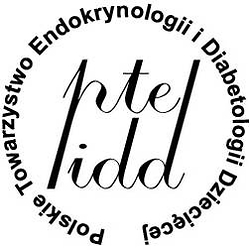1. Kaplowitz PB. Update on Precocious Puberty: Who Should Be Treated? Adv Pediatr 2020; 67: 93–104. doi: 10.1016/j.yapd.2020.04.003.
2.
Teilmann G, Pedersen CB, Jensen TK, et al. Prevalence and incidence of precocious pubertal development in Denmark: an epidemiologic study based on national registries. Pediatrics 2005; 116: 1323–1328. doi: 10.1542/peds.2005-0012.
3.
Herman-Giddens ME, Slora EJ, Wasserman RC, et al. Secondary sexual characteristics and menses in young girls seen in office practice: a study from the Pediatric Research in Office Settings network. Pediatrics 1997; 99: 505–512. doi: 10.1542/peds.99.4.505.
4.
Soliman AT, Alaaraj N, De Sanctis V, et al. Long-term health consequences of central precocious/early puberty (CPP) and treatment with Gn-RH analogue: a short update. Acta Bio-Medica Atenei Parm 2023; 94: e2023222. doi: 10.23750/abm.v94i6.15316.
5.
Huang H, Liu L, Su S, Xie D. Self-consciousness and depression in precocious pubertal children. J Int Med Res 2021; 49: 3000605211020227. doi: 10.1177/03000605211020227.
6.
Knific T, Lazarevič M, Žibert J, et al. Final adult height in children with central precocious puberty – a retrospective study. Front Endocrinol (Lausanne) 2022; 13: 1008474. doi: 10.3389/fendo.2022.1008474.
7.
Aguirre RS, Eugster EA. Central precocious puberty: From genetics to treatment. Best Pract Res Clin Endocrinol Metab 2018; 32: 343–354. doi: 10.1016/j.beem.2018.05.008.
8.
Williams VSL, Soliman AM, Barrett AM, Klein KO. Review and evaluation of patient-centered psychosocial assessments for children with central precocious puberty or early puberty. J Pediatr Endocrinol Metab JPEM 2018; 31: 485–495. doi:10.1515/jpem-2017-0465.
9.
Manotas MC, González DM, Céspedes C, et al. Genetic and Epigenetic Control of Puberty. Sex Dev 2022; 16: 1–10. doi: 10.1159/000519039.
10.
Moise-Silverman J, Silverman LA. A review of the genetics and epigenetics of central precocious puberty. Front Endocrinol (Lausanne) 2022; 13: 1029137. doi: 10.3389/fendo.2022.1029137.
11.
Léger J, Carel JC. Central Precocious Puberty – Management and Long-term Outcomes. Eur Endocrinol 2015; 11: 45–46. doi: 10.17925/EE.2015.11.01.45.
12.
De Sanctis V, Soliman AT, Di Maio S, et al. Long-term effects and significant Adverse Drug Reactions (ADRs) associated with the use of Gonadotropin-Releasing Hormone analogs (GnRHa) for central precocious puberty: a brief review of literature. Acta Bio-Medica Atenei Parm 2019; 90: 345–59. doi: 10.23750/abm.v90i3.8736.
13.
Sharma A, Ahmad Farouk I, Lal SK. COVID-19: A Review on the Novel Coronavirus Disease Evolution, Transmission, Detection, Control and Prevention. Viruses 2021; 13: 202. doi: 10.3390/v13020202.
14.
Aria M, Cuccurullo C. Bibliometrix: An R-tool for comprehensive science mapping analysis. J Informetr 2017; 11: 959–975.
15.
Fernandez F, Baker DP. Science Production in the United States: An Unexpected Synergy between Mass Higher Education and the Super Research University. In: The Century of Science. Emerald Publishing Limited; 2017; 85–111. doi: 10.1108/S1479-367920170000033006.
16.
Nguyen CM, Choung JY. Scientific knowledge production in China: a comparative analysis. Scientometrics 2020; 124: 1279–1303.
17.
Sukhera J. Narrative Reviews: Flexible, Rigorous, and Practical. J Grad Med Educ 2022; 14: 414–417. doi: 10.4300/JGME-D-22-00480.1.
18.
Sawin VI, Robinson KA. Biased and inadequate citation of prior research in reports of cardiovascular trials is a continuing source of waste in research. J Clin Epidemiol 2016; 69: 174–178. doi: 10.1016/j.jclinepi.2015.03.026.
19.
Herman-Giddens ME, Slora EJ, Wasserman RC, et al. Secondary sexual characteristics and menses in young girls seen in office practice: a study from the Pediatric Research in Office Settings network. Pediatrics 1997; 99: 505–512. doi: 10.1542/peds.99.4.505.
20.
Åstedt-Kurki P, Kaunonen M. International research collaboration – advantages and requirements. Scand J Caring Sci 2019; 33: 507–507. doi: 10.1111/scs.12763.
21.
Chabouni H, Jemaa MB, Ghorbel M, et al. Syndrome de McCune-Albright : à propos d’un cas et revue de la littérature. Pan Afr Med J 2023; 46: 33. doi: 10.11604/pamj.2023.46.33.35274.
22.
Lai Z, Pu T, Li J, et al. Visual analysis of hotspots and trends in long COVID research based on bibliometric. Heliyon 2024; 10: e24053. doi: 10.1016/j.heliyon.2024.e24053.
23.
Pranckutė R. Web of Science (WoS) and Scopus: The Titans of Bibliographic Information in Today’s Academic World. Publications 2021; 9: 12.

 POLSKI
POLSKI







